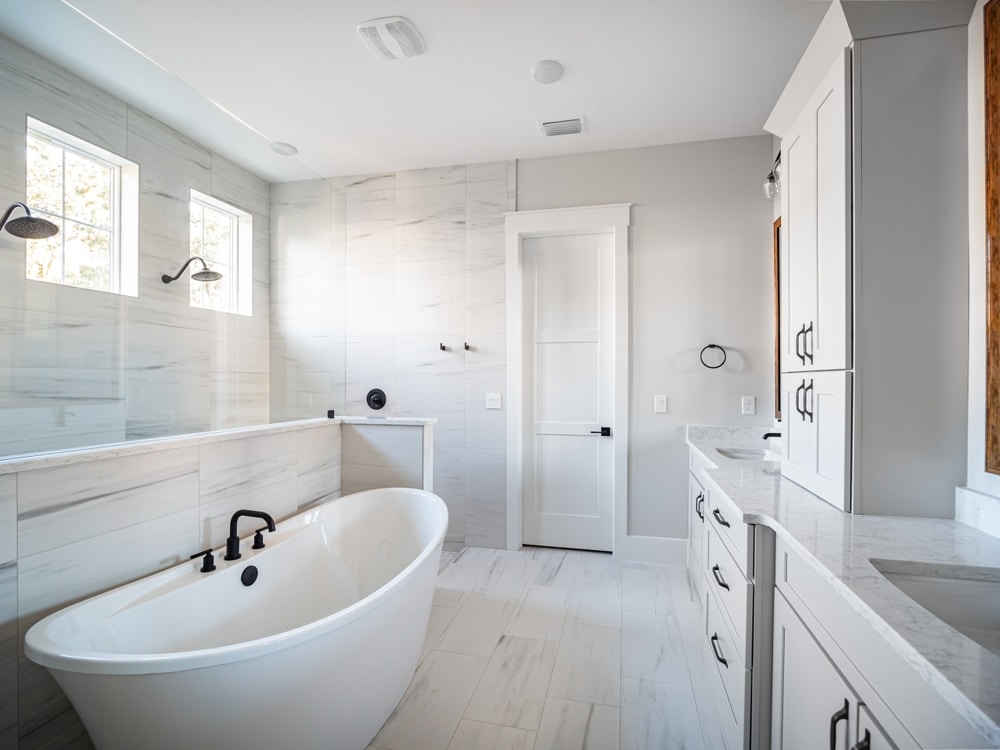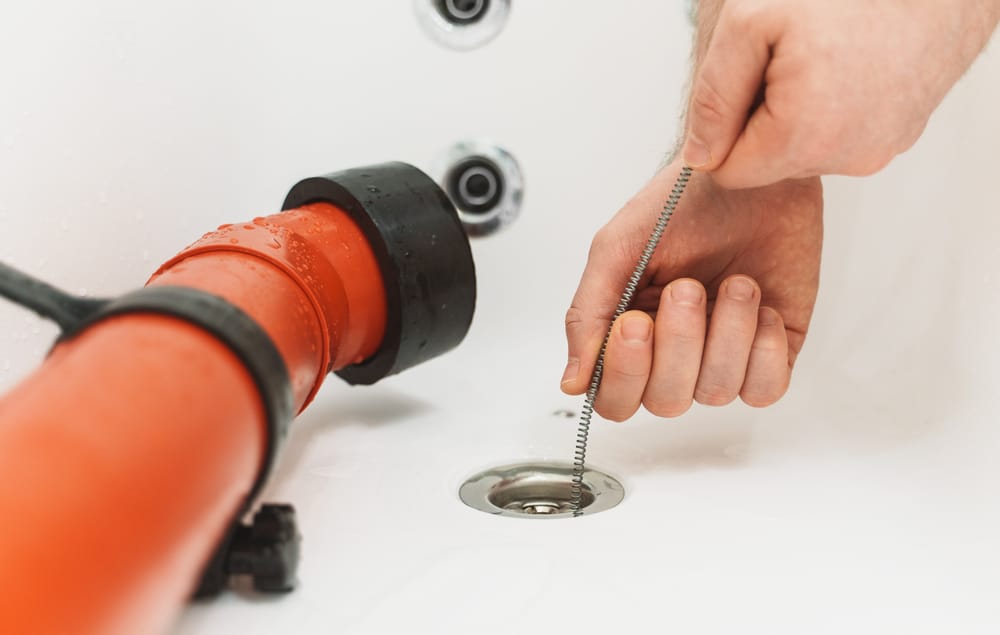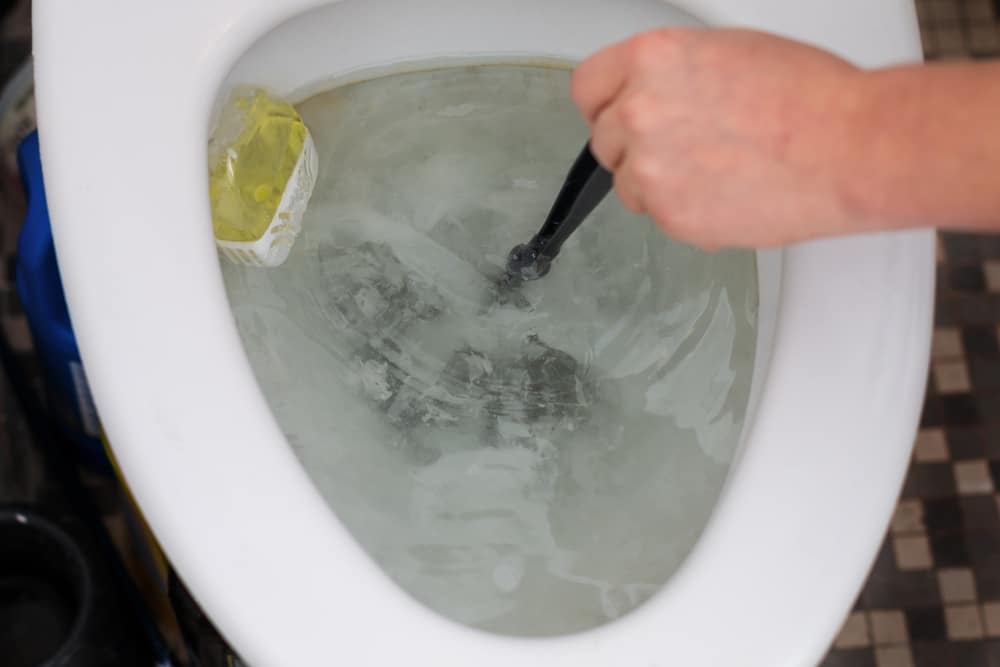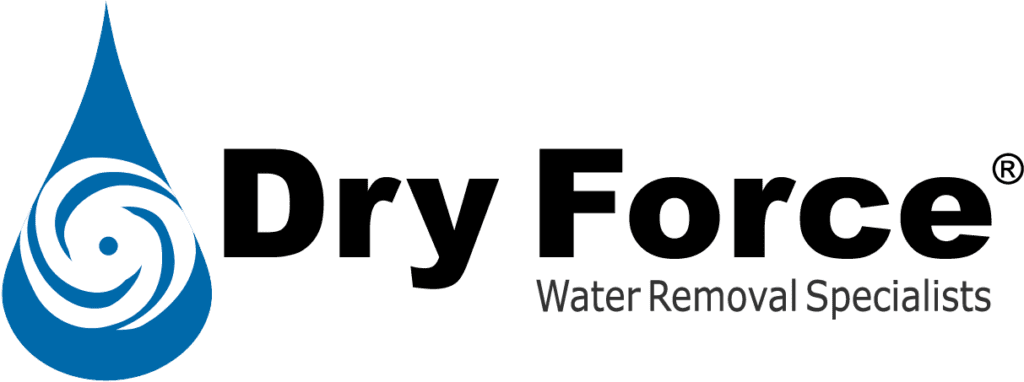
One moment, you’re washing your hands after a long day at work, and the next, you’re in full-on panic mode because your sink is overflowing and won’t stop. This may be happening to you now, so let’s skip any further introduction. Our plumbing experts at Dry Force have quick and easy solutions for your sink, tub, or toilet overflow in the following blog.
Table of Contents
How to Deal With a Flooded Bathroom or Kitchen Sink
You don’t need us to tell you that a flooded bathroom is bad news—you already feel the effects firsthand. But it’s important to know the less obvious dangers of an overflowing sink or overflowing toilet, along with some tips to avoid these dangers.
Plumbing overflows can cause water damage to floors, cabinets, ceilings, and more, leaving risks of mold growth, bacterial growth, and electrical hazards in their wake. Let’s look at how these dangers come about, plus some quick fixes.

What Can Cause an Overflowing Sink?
An overflowing sink is usually caused by a clog. When a clog is so bad that water can’t drain, the sink quickly fills up. Everyone experiences a clog now and then, and they typically result from too much hair and oil building up in a pipe.
Sometimes, food waste or a broken garbage disposal may clog a sink. Regardless of the cause, if you’re watching the sink fill up in front of you, then turn off the water immediately. But it’s not always so simple.
If a faucet is mistakenly left on, a clog can cause a serious plumbing overflow, and therefore serious water damage. The best way to avoid an overflowing sink is to be mindful of what you put in your drains. Anything that isn’t biodegradable brings a risk of clogging.
How to Fix a Flooded Sink
You can usually fix an overflowing sink on your own, but if the following method does not work, you may have to call a professional plumber.
- Turn off the faucet.
- Use small buckets and other containers to remove water from the sink.
- Clear the clog with a plunger.
- If you can’t unclog the sink with a plunger, put a bucket under the sink’s drain trap, then remove and empty the trap.
- Clear clogs inside the trap with a snake or wire.
- Put the drain tap back in place and run the faucet to test the results.
How to Respond to an Overflowing Bathtub
An overflowing tub is one way to ruin a relaxing evening. If you had candles set up and calm music playing while you were enjoying a bath, we’re sorry that your drain ruined the fun.
Most bathtubs have an overflow drain to prevent flooding. This drain is located at the front of your tub, and while each overflow drain looks different, they are all circular.
If your overflow drain is defective, then water can spill over the tub without you knowing, rapidly causing water damage. Like an overflowing sink, an overflowing tub comes with risks of mold growth, bacterial growth, and electrical hazards.

What Can Cause an Overflowing Bathtub?
An overflowing bathtub can be caused by a few things, namely the following:
- Clogged or Faulty Overflow Drain
- Tub is Left Running
- Overflow Gasket is Damaged
- Leaking Overflow Tube
Read More: 5 Common Reasons Why Your Bathtub is Leaking Water
What to Do if Your Tub is Overflowing
If you’re in the tub when it starts overflowing, be careful as you step out. The water on your floor can prove to be slippery. Once you’re dried off, it’s time to spring into action:
- Shut off the water supply.
- Clean up excess water and look for signs of water damage and mold growth.
- If your water damage is extensive, contact your insurance company.
- Look for the cause of the problem.
- Get in touch with a water damage restoration company.
How to Deal With an Overflowing Toilet
We’ve looked at overflowing sinks and overflowing tubs, but now we’re at the feared overflowing toilet. It’s time to face our fears, everyone—with a little bit of effort, you can easily reverse the effects of this bathroom nightmare.

What Causes a Toilet Overflow?
When a toilet begins overflowing in front of you, your first thought likely isn’t, “Hmmm, what could be the source of my issue?” It’s likely, “Oh no! Oh no! Oh no!”
Well, we’re going to skip past the “Oh no!” phase and help you get to the bottom of this.
1. Clogged or Blocked Drain
Clogs are common culprits for all plumbing overflows. When a clogged or blocked drain results in an overflowing toilet, water flows out of the bowl instead of the tank. The consequences of this are usually seen all over your floor.
2. High Filler Float
A filler float divides water between the toilet bowl and the toilet tank. When the filler float is too high, water overflows in the tank, resulting in an overflowing toilet.
3. Blocked Vent Pipe
Most people haven’t heard of a vent pipe, and even fewer know what they do. In short, vent pipes move air into your plumbing system after each flush. If this air isn’t replaced each time, then your toilet will struggle to flush properly.
This struggle to flush usually results in overflows. Blocked vent pipes require attention from a professional plumber.
How to Fix an Overflowing Toilet
An overflowing toilet can usually be solved in a DIY manner, but if the following procedure does not work, it’s best to call a professional.
- Grab a plunger, toilet auger, and an O-ring.
- Remove the toilet tank’s lid and push the flapper down to prevent water from entering the bowl.
- Shut off the toilet’s water supply, which may be behind and at the bottom of the toilet.
- Remove clogs with a plunger and break up blockages with the auger.
Read More: 7 Ways to Respond to an Overflowing Toilet
Maintenance Tips for Sinks, Tubs, and Toilets
Both sinks and tubs have overflow prevention mechanisms—it is important to keep these mechanisms clean and unblocked. Sinks have overflow holes, while tubs have overflow drains and gaskets.
You should clean these regularly and use brushes to remove buildup. Be sure you aren’t flushing harmful chemicals or foreign objects down the sink and tub drains.
Toilets are resilient, but they can only take so much. The best way to avoid clogs and blockages is to refrain from flushing non-flushable items. If clogs arise, try using a plunger or auger to clear it up. If these tools don’t work, a professional plumber can help you.

Hire Dry Force For Plumbing Overflow Cleanup & Repairs
When plumbing overflows catch you off guard, Dry Force is here to help. Our overflow plumbing restoration crew is available 24/7/365, arriving within one hour to address water damage from sink overflows, tub overflows, and toilet overflows.
An overflowing toilet, sink, or tub can pose serious health hazards and structural concerns to your home or business. With our high-grade drying and water extraction equipment, we’ll restore your property to its pre-loss condition, removing mold, sewage water, and other contaminants.
A tub overflow can turn a relaxing night into a stressful one within minutes. For times like these, Dry Force is your trusted partner. You can call our 24/7 emergency service line at (866) 314-3290 or contact us online.
